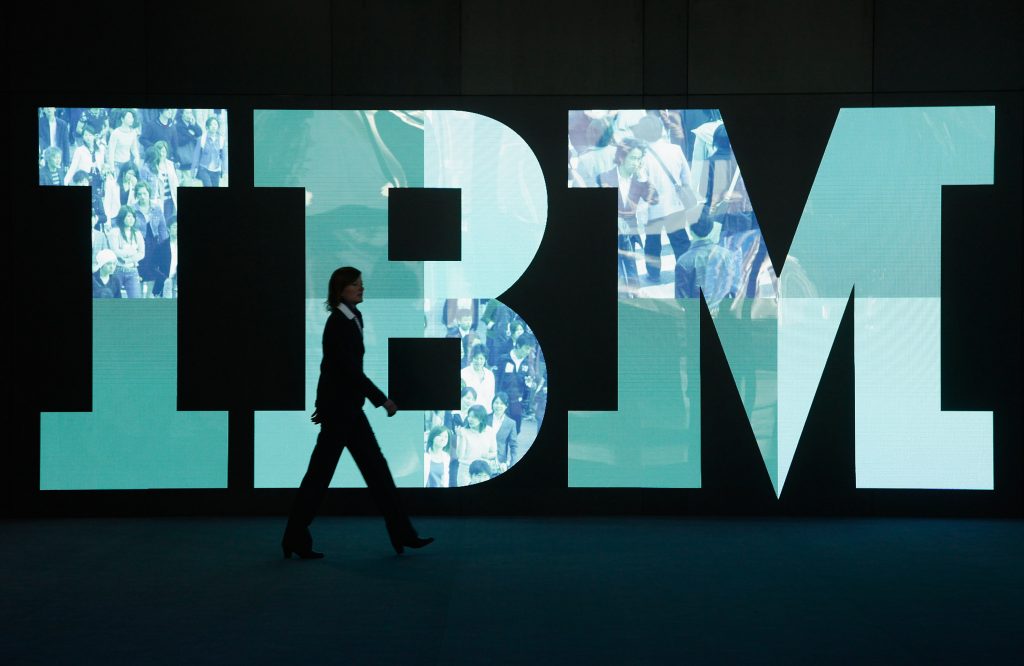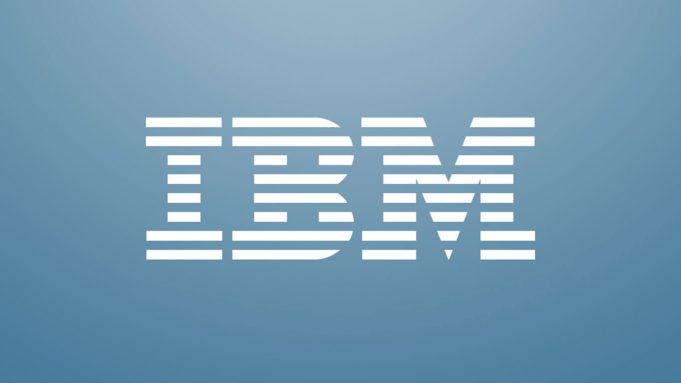IBM is a leading diversified technology company with a broad range of business offerings across IT hardware, software, and services segments. IBM combines its broad mix of capabilities to provide integrated solutions and platforms to its clients. IBM was founded in 1911. IBM operates in more than 175 countries across the globe and has over 400,000 employees.
IBM Business Segments
IBM has five business segments: Global Technology Services (GTS), Global Business Services (GBS), Software, Systems Hardware, and Global Financing. IBM collectively calls GBS and GTS as Global Services.

IBM Global Technology Services (GTS)
Large businesses in different industries such as financial services, telecommunications, retail, and healthcare need robust IT infrastructure and applications to serve their customers and efficiently run their business operations. IBM Global Technology Services (GTS) provides end-to-end IT infrastructure and support services to help these businesses maintain and improve the availability of IT. IBM GTS provides following services:
- Strategic Outsourcing. IBM provides comprehensive IT outsourcing services and takes complete ownership of the client’s IT platforms.
- Integrated Technology Services. IBM provides a portfolio of project-based and managed services. Managed services consist of data center infrastructure management services, network managed services, mobility services, security services, and business continuity and resiliency services.
- Technology Support Services (Maintenance Services). IBM provides a comprehensive set of support services for IBM-branded hardware and software.
- Cloud. IBM offers a broad portfolio of cloud computing solutions & services including Infrastructure as a Service (IaaS), Platform as a Service (PaaS), Software as a Service (SaaS), cloud security services, and cloud disaster recovery services.
IBM Global Business Services (GBS)
IBM Global Business Services (GBS) provides the following services:
- Consulting and Systems Integration. IBM provides Strategy and Transformation Services, Application Innovation Services, Enterprise Applications, and Smarter Analytics.
- Application Management Services. IBM provides application management, maintenance and support services for packaged software, as well as custom and legacy applications. IBM offers advanced capabilities in areas such as application testing and modernization and cloud application services.
- Global Process Services (included within Application Management Services). IBM delivers a range of offerings consisting of standardized through transformational solutions including processing platforms and business process outsourcing.

IBM Global Services
IBM Global Services consists of GBS and GTS. Approximately 60 percent of Global Services revenue is annuity based. It comes primarily from outsourcing and maintenance arrangements. The services are provided on a time-and-material basis, as a fixed-price contract, or as a fixed-price per measure of output contract. The contract terms range from less than one year to over 10 years.
IBM recognizes revenue from time-and-material contracts as labor hours are delivered and direct expenses are incurred. IBM recognizes revenue from fixed-price design and build contracts under percentage-of-completion (POC) method. Under the POC method, IBM recognizes revenue based on the labor costs incurred to date as a percentage of the total estimated labor costs to fulfill the contract. Billings usually occur in the month after IBM performs the services or in accordance with specific contractual provisions.
IBM Software
IBM software offerings consists primarily of middleware and operating systems software. Middleware serves as a software layer that connects operating systems to applications across a standard software platform. The IBM middleware portfolio allows seamless integration of unrelated systems, processes, and applications. IBM’s middleware and integrated solutions include advanced database management, information integration, data governance, enterprise content management, data warehousing, business analytics and intelligence, predictive analytics, and big data analytics.
Approximately 70 percent of Software segment revenue is annuity based, coming from recurring license charges, software sold “as-a-Service”, and ongoing post-contract support. The remaining revenue relates to one-time charge (OTC) arrangements in which clients pay one, up-front payment for a perpetual license.

IBM Systems Hardware
IBM hardware offerings include system servers and storage solutions. IBM also offers installation services for some of its complex hardware products.
- Servers. IBM Servers portfolio includes z Systems and Power Systems. z Systems is the family name for all IBM mainframe computers. IBM z Systems are designed for zero percent downtime. IBM Power Systems offer high-end servers built with open technologies.
- Storage. IBM Storage portfolio consists of a broad range of software-defined storage solutions, flash storage, disk and tape storage solutions.
IBM sells half of the Systems Hardware servers and storage solutions through its business partners and the remaining half directly to the end-user clients.
IBM Global Financing
IBM Global Financing facilitates IBM clients’ acquisition of IT systems, software and services by providing financing solutions in the IBM areas of expertise. IBM Global Financing offers:
- Client Financing. It involves lease, installment payment plan, and loan financing to end user clients for terms up to seven years.
- Commercial Financing. It involves short-term inventory and accounts receivable financing to suppliers, distributors, and remarketers of IBM and OEM products.
- Remanufacturing and Remarketing. It involves assets that include used equipment returned from lease transactions or used surplus equipment acquired internally or externally. The assets are refurbished or upgraded and sold or leased to new or existing clients.

Key Elements Of IBM Business Model
IBM business model involves selling of IT hardware, software, and services to businesses across industries all over the globe. The key revenue and cost elements of IBM business model are summarized in the diagram below. It shows the different types of products offered by IBM hardware, software, services, and financing business segments and how IBM generates the revenue from the different types of offerings.
IBM Business Segments Revenue 2015
In 2015, IBM generated $81.7 billion of total revenues. Of these total revenues, IBM generated
- $32.0 billion revenues, 39.2% of the total, from the global technology services segment. Of the $32.0 billion, IBM generated $17.0 billion from outsourcing, $8.9 billion from integrated technology services, and $6.1 billion from maintenance services.
- $17.2 billion revenues, 21.0% of the total, from the global business services segment. Of the $17.2 billion, IBM generated $4.9 billion from outsourcing and $12.3 billion from consulting and system integration.
- $22.9 billion revenues, 28.1% of the total, from the software segment. Of the $22.9 billion, IBM generated $19.5 billion from middleware, $1.8 billion from operating systems software, and $1.6 billion from other software.
- $7.6 billion revenues, 9.3% of the total, from the systems hardware segment.
- $1.8 billion revenues, 2.3% of the total, from the global financing segment.
IBM Revenues, Net Profits, and Net Profit Margins 2015
Of the $81.7 billion of IBM total revenues in 2015, $41.1 billion were the cost of revenue. This resulted in $40.7 billion of gross profit and a gross margin of 49.8%. IBM other operating costs were $25.7 billion. These include research, development and engineering (RD&E) and selling, general, and administrative (SG&A) expenses. This resulted in $15.0 billion of operating profit and an operating margin of 18.4%. After interest and other non-operating income and expenses and income taxes, IBM had a net profit of $13.2 billion and a net margin of 16.1%.
IBM Organization Structure Changes In 2016
IBM announced a number of changes to its organization structure during its investor briefing on February 25, 2016. These changes support the IBM transformation into a cognitive solutions and cloud platform company. The key changes are summarized below.
- The software segment will no longer exist as a stand-alone unit.
- IBM has created a cognitive solutions business unit. This includes solutions software and transaction processing software. Solutions software are in areas such as analytics, commerce and security. The unit also includes several of the IBM initiatives around Watson, Watson Health, Watson Internet of Things (IoT). Watson is the first commercially available cognitive computing platform that has the ability to interact in natural language, processing vast amounts of big data, and learning from its interactions with people and computers.
- Integration software, including WebSphere, has been brought together with IBM’s cloud platforms and global technology services business.
- Operating systems software has been moved to systems to align it more closely with the underlying hardware platforms.
IBM new organization structure is represented in the following diagram.
IBM 2015 revenues as per new business segments are provided in the following diagram. Of the total $81.7 billion revenues in 2015, IBM generated
- $35.1 billion revenues, 43.0% of the total, from the technology services and cloud platforms segment. Of the $35.1 billion, IBM generated $23.1 billion from infrastructure services, $7.4 billion from technical support services, and $4.6 billion from integration software.
- $17.8 billion revenues, 21.8% of the total, from the cognitive solutions segment. Of the $17.8 billion, IBM generated $12.0 billion from solutions software and $5.8 billion from transaction processing software.
- $17.2 billion revenues, 21.0% of the total, from the global business services segment. Of the $17.2 billion, IBM generated $7.7 billion from consulting, $1.4 billion from global process services, and $8.1 billion from application management business.
- $9.5 billion revenues, 11.7% of the total, from the systems segment. Of the $9.5 billion, IBM generated $7.6 billion from systems hardware and $2.0 billion from operating systems software.
- $1.8 billion revenues, 2.3% of the total, from the global financing segment.

IBM Revenues, Net Profits, and Net Profit Margins 2011 To 2015
IBM Revenues are on a constant decline for the last five years. This may be due to several factors. Some of them are: Weak global economy; Decreasing demand of IBM products; Increasing competition in the different business segments; IBM divestitures of some of its businesses; Strong dollar currency environment.
However, IBM is able to maintain the net profit margins because of a strong financial discipline.
Will the newly announced organization structure help IBM grow its top-line revenues as well? Analysts and investors would be looking forward to the IBM earnings in the coming quarters and years for answer to this question.








